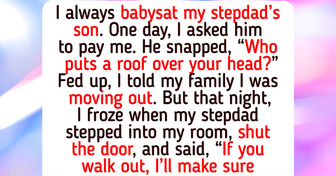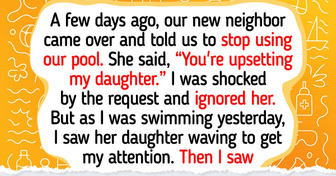I Refused to Cover for a ‘New Mom’ Coworker—HR Got Involved

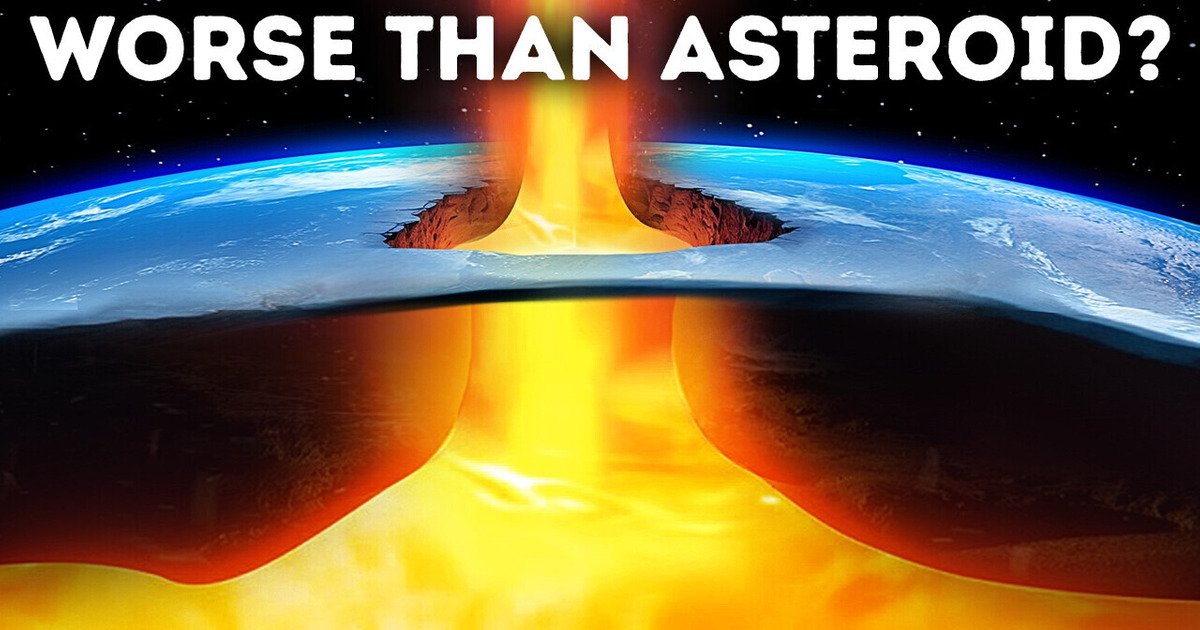
Massive tsunamis, destructive tornadoes, giant meteorites, devastating earthquakes. Ooh, better have insurance. But all these are minor natural disasters compared with the eruption of a volcano.
Some volcanoes can destroy a city, as it was with Pompeii. Or some islands in the Pacific Ocean. But there’s a dangerous type of eruption that can destroy all life on the planet. This type is called “flood basalt.”
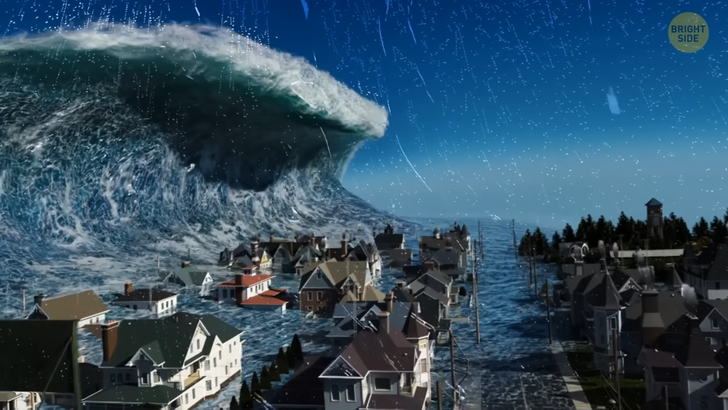
But first of all, let’s first figure out what a volcano is. Rivers of hot liquid metals and incandescent rocks flow deep inside our planet. And the deeper it gets, the hotter they are. The source of this hot mass is the mantle, which is the middle layer of Earth, located between the core and the crust. These fiery streams are called magma, and it flows everywhere.
But we don’t feel its heat because of the thick layer of our planet’s crust. Magma is lighter than the crust, so it always tries to break out to the surface. And in some places, it succeeds. At the junctions of tectonic plates, it splashes out when one plate moves under a thicker one.
When magma reaches the surface, it becomes lava. This substance burns the ground around and cools down quickly. It hardens and forms a new layer of rock. The following splash of magma falls on top of this layer. Thus, a mountain appears layer by layer over millions of years. And in its mouth, a fault of tectonic plates splashes out magma.
This mountain is called a volcano. It spits lava and ash into the sky, then falls asleep and wakes up again during seismic activity. Now imagine that several giant volcanoes begin to splash out an infinite amount of magma. It just doesn’t end and covers an entire continent. This is a flood basalt. And one day, it did happen.
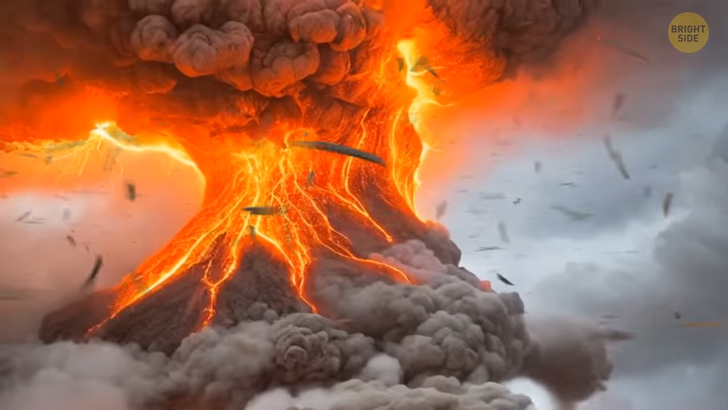
About 252 million years ago, in the northern part of our planet, a lot of magma accumulated under Earth’s crust. Trillions of tons of hot rock were concentrated in one place on a gigantic territory. And gradually, all this fiery energy began to seep out of the ground. Hot gas started to come out in different places in this territory.
The ground shook endlessly, and the crust rose hundreds of feet. All pointing to the approach of an imminent catastrophe. And then, at some point, magma began to pour out. Giant fountains of fire burst out of the ground. Do you know those geysers in Iceland? So, imagine the same things but dozens of times higher and with hot lava and ash instead of water and steam.
The ash and lava flows were so strong that they reached the clouds. Under Earth’s crust, there was a gigantic bubble of magma. And it squeezed out fiery jets under the pressure of rock and ground. The rift was getting bigger. Magma was flowing out everywhere. It began to fill the entire North continent. The flood of lava spread wider and wider. The streams of molten rock seemed endless. Layers of molten basalt rock overlapped one another, forming a giant tsunami of lava 160 feet high. It poured out of the ground for hundreds of thousands of years, flooding forests, rivers, lakes, and meadows.
At the same time, billions of tons of volcanic ash rose into the sky which could lead to a volcanic winter since sulfur dioxide in the ash reflected the sun’s rays. This might have lowered the temperature on the continent by several degrees. Then, dust and ash probably condensed and formed giant clouds that watered the surface with toxic acid rain.

After that, the cooled lava formed a giant thick shield preventing magma from seeping out of the endless fire bubble. The global catastrophe was over. But only for a short time. Trillions of tons of magma were still flowing under a thick layer of solid basalt. The fiery rivers couldn’t reach the top, so they spread out to the sides. As a result of this expansion, huge nets were formed under the thick rock.
They ran in different directions like a spider web and heated Earth’s crust. Gasses started coming out from under the surface again. More and more energy accumulated there until an explosion of unimaginable force occurred. In addition to magma, carbon dioxide and ash escaped to the surface. They filled the atmosphere and caused the greenhouse effect. The temperature on the whole planet increased by several degrees. This release provoked another catastrophe that began in the ocean.
There were deposits of methane, an explosive gas, on the seabed. Under ice-cold water, the methane was frozen and harmless. But the greenhouse effect in the atmosphere warmed up the entire ocean. Millions of tons of methane began to rise to the surface. This gas is more potent than carbon dioxide. Therefore, when it hit the atmosphere, the temperatures on Earth increased again. The whole globe turned into a hot sauna. In previously cool and humid places, the temperature reached those of the modern Sahara. Of course, most animals and insects couldn’t survive such a cataclysm. But ocean life took much more damage.
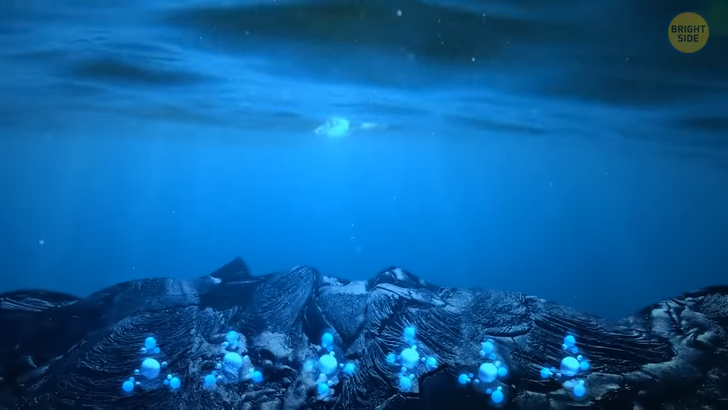
The heat and methane reduced the amount of oxygen in the ocean. Fish and other marine life couldn’t survive in such conditions. New problems appeared when anaerobic bacteria started to multiply in non-oxygen water. They fed on methane and carbon dioxide and released hydrogen sulfide — a toxic substance that poisoned water even more. About 75% of land animals and 95% of the ocean’s inhabitants went extinct.
This flood basalt eruption was the only disaster in the planet’s history that destroyed almost all plants and significantly reduced the insect population. Several species of the hardiest animals managed to survive in these conditions. The planet took about 10 million years to recover completely. After that, evolution began a new process of developing life. And here are two pieces of news.
The bad one is that flood basalts will happen again and will be no less devastating than 252 million years ago. The good news is that it will happen in hundreds of millions of years. But when that happens, humanity will need to be prepared. It will start on the ocean floor. First, lava fountains miles high will begin boiling the water and emit sulfur dioxide into the atmosphere, where it will reflect sunlight. Along with ash and magma, a massive amount of water vapor will rise into the air.
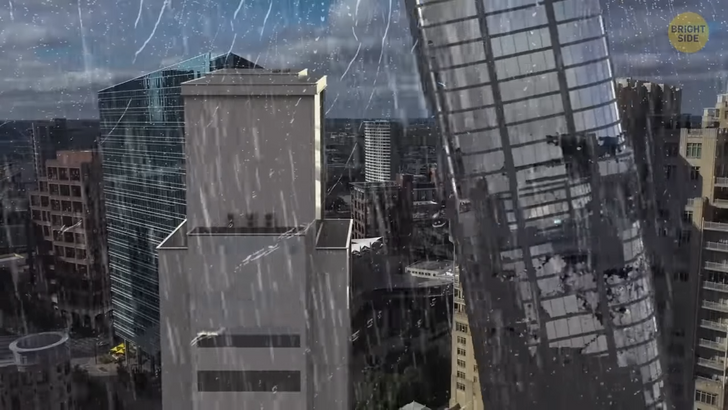
Livestock won’t survive, and people will have breathing problems. Acid rain and increased humidity caused by the evaporation of the oceans will lead to the corrosion of buildings. All flights will be canceled. People will have to wear gas masks. Many animals won’t be able to handle this eruption, but humans will adapt quickly.
But then another and another eruption will follow, and this endless catastrophe will soon deplete the resources of humanity. Plants and trees won’t recover so fast, and oxygen production will be significantly reduced. Let’s hope that humanity will have colonized other planets, including those outside the Solar System, by that time.
And now, let’s go back to the present. Ah... About 70% of the seismic activity associated with volcanoes occurs underwater. So, let’s see how ordinary volcanoes on the ocean floor work. Water, as well as land, rests on tectonic plates. Therefore, if their structure is broken at the joints, magma seeps through them.
But unlike terrestrial volcanoes, lava here doesn’t spread in different directions, burning everything it meets. It solidifies under the pressure of cold water. Underwater volcanoes can erupt for a long time with breaks in between. Magma covers the seabed. After another hundred or thousand years, a new eruption begins, and a new layer of rock forms over the previous one.
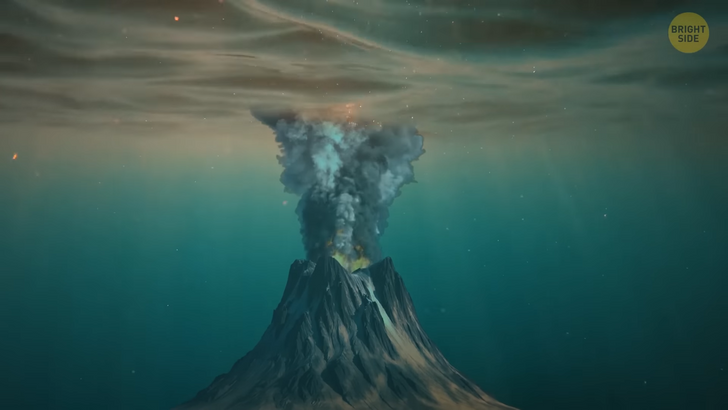
Over millions of years, layer by layer, magma is rising. And then, one day, a volcano rises out of the water. Magma splashes out of it and increases its height. And now, we have a large volcanic island. Then the volcano falls asleep, and life appears on the newly formed piece of land.
Magma flows from the planet’s mantle, filled with various chemical elements. This hot mix saturates the soil with useful substances and, thus, promotes the growth of plants and trees. Then birds and other animals arrive there, and the volcanic island turns into a paradise.

